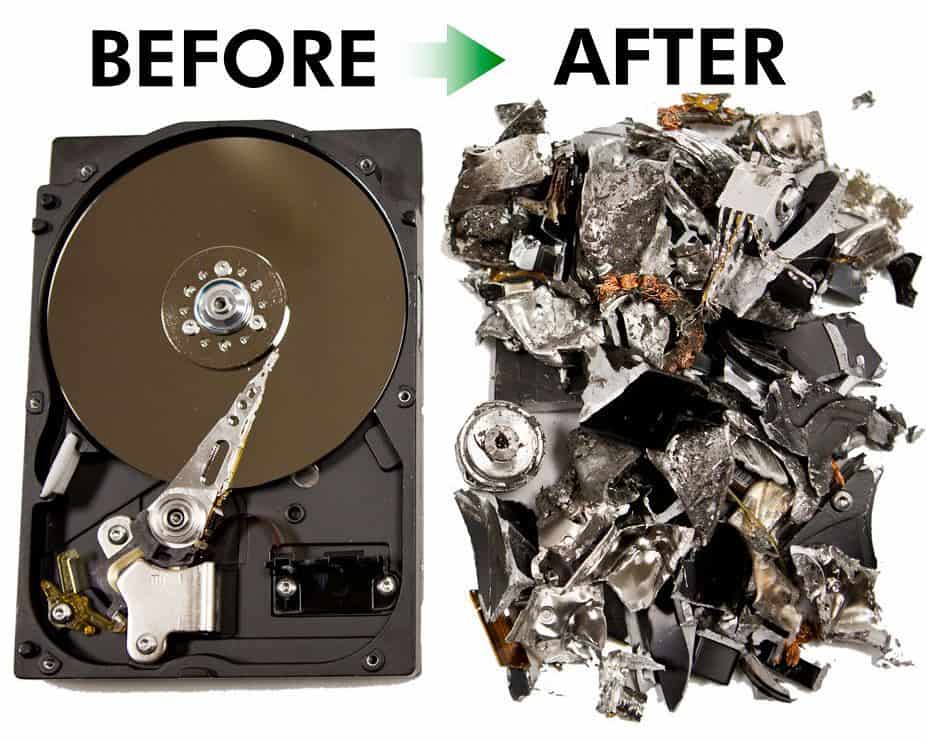Exploring the Importance of Information Devastation in the Context of Computer System Safety Solutions and Protecting Confidential Data
In an era where information breaches are progressively usual, the importance of reliable information destruction can not be overemphasized. What approaches can organizations execute to boost their information destruction procedures?
Recognizing Information Destruction
Data damage is a crucial element of computer system security that involves the long-term removal of information from storage space devices to stop unapproved access and potential data breaches. In a progressively electronic landscape, companies face increased dangers related to delicate details being improperly accessed or exploited. Efficient information destruction safeguards against these dangers, guaranteeing that personal dataâEUR" such as customer info, intellectual residential property, and financial recordsâEUR" can not be recouped after disposal.
Comprehending the relevance of data destruction extends beyond plain conformity with legal and governing structures; it is important for keeping business honesty and depend on. When information is incorrectly managed or inadequately damaged, the effects can be serious, including financial loss, reputational damages, and legal liabilities.

Techniques of Data Removal

One common technique is information cleaning, which entails overwriting existing data with random patterns multiple times. This technique renders the original data irretrievable, making it a prominent option for organizations looking for to shield private info.
An additional approach is degaussing, which uses a powerful electromagnetic field to disrupt the magnetic domains on storage tools, effectively removing the information. This strategy is particularly reliable for magnetic media but is not relevant to solid-state drives.
Physical destruction is an additional robust method, entailing the shredding or crushing of storage space gadgets. This method warranties that information recuperation is practically impossible, making it optimal for very sensitive information.
Last but not least, security can offer as a complementary approach to information obliteration. By securing information prior to removal, companies can include an extra layer of safety, making sure that also if residues are recouped, they continue to be hard to reach without the decryption key. Each approach ought to be picked based upon the level of information level of sensitivity and the particular security needs of the organization.
Legal Compliance and Information Safety And Security
Organizations must browse a complicated landscape of legal requirements connected to information safety, particularly after executing methods of information eradication. Different regulations, such as the General Information Protection Guideline (GDPR) and the Health Insurance Policy Mobility and Accountability Act (HIPAA), enforce stringent guidelines on just how organizations have to deal with and get rid of of sensitive data. Failure to adhere to these policies can lead to considerable lawful repercussions, consisting of significant fines and reputational damages.
Data devastation processes have to be thoroughly documented to show compliance with suitable legislations and standards. This paperwork not just serves as evidence of adherence to lawful commitments but also highlights a commitment to securing delicate info. Organizations must additionally develop clear plans pertaining to information retention and devastation timelines, check my reference ensuring that data is not held longer than necessary.

Additionally, normal audits and evaluations of data destruction practices are vital to maintain conformity and adjust to progressing legal frameworks (data destruction). By proactively dealing with legal requirements, organizations can mitigate risks associated with data breaches and demonstrate their commitment to information security. Inevitably, focusing on lawful conformity in information devastation procedures is not just a governing obligation, yet a basic element of a robust information safety and security method
Effect On Business Reputation
The track record of a service can be considerably influenced by its technique to data devastation and administration. In today's digital landscape, where information breaches can happen at any type of moment, the failing to effectively dispose of delicate information can lead to extreme effects. Organizations that improperly manage information damage risk exposing confidential customer information, which not just goes against personal privacy laws but likewise wears down trust amongst stakeholders and customers.
A damaged credibility can lead to decreased customer commitment, as customers end up being reluctant to involve with a service that has actually demonstrated oversight in securing their data. Unfavorable promotion surrounding a data violation can have a long lasting impact, as prospective customers might be prevented by the regarded absence of security. This can lead to a direct decrease in revenue and market share.
In addition, businesses that focus on data damage as component of their security method can enhance their reputation by showcasing their dedication to securing delicate information. By embracing stringent information management techniques, organizations can not only reduce dangers however also place themselves as reliable entities in their corresponding industries, thereby reinforcing their overall brand picture.

Finest Practices for Secure Disposal
Applying ideal techniques for protected disposal of information is vital for reducing threats related to information breaches and ensuring compliance with personal privacy laws. Organizations click here to read must adopt a comprehensive data disposal plan that lays out treatments for both physical and electronic data destruction.
For physical data storage space gadgets, such as hard disk drives, shredding or degaussing is advised to stop data recovery. Additionally, companies need to keep a chain of safekeeping documents throughout the disposal process, making certain liability and traceability of disposed products.
For electronic data, using software that sticks to industry standards for data cleaning is critical. This software program should overwrite existing information several times, making recovery click to read virtually difficult. It is additionally crucial to confirm the efficiency of the information devastation process with audits or third-party analyses.
Training workers on protected disposal methods includes one more layer of security, as human error can usually cause data direct exposure. Consistently evaluating and upgrading disposal policies makes certain alignment with advancing policies and technical innovations. By implementing these finest methods, companies can significantly lower the threat of unapproved data access and enhance their total data security approach.
Conclusion
To conclude, information devastation is an essential facet of computer safety solutions that makes sure the protection of private info from unauthorized gain access to. Applying efficient techniques of data obliteration, sticking to lawful compliance, and acknowledging the influence on organization reputation are vital components of a comprehensive information protection technique. By adopting ideal practices for secure disposal, organizations can promote depend on with customers and safeguard delicate information, inevitably adding to a more protected digital landscape.
In a period where data violations are significantly typical, the importance of efficient data damage can not be overemphasized.Data destruction is an essential part of computer system security that involves the irreversible elimination of data from storage tools to stop unapproved accessibility and possible data breaches. Organizations needs to also develop clear policies pertaining to data retention and devastation timelines, ensuring that data is not held longer than required.
By proactively resolving legal demands, organizations can mitigate risks linked with data breaches and demonstrate their commitment to information safety and security (data destruction). Eventually, focusing on lawful compliance in data destruction processes is not just a regulative obligation, yet an essential element of a robust data protection technique